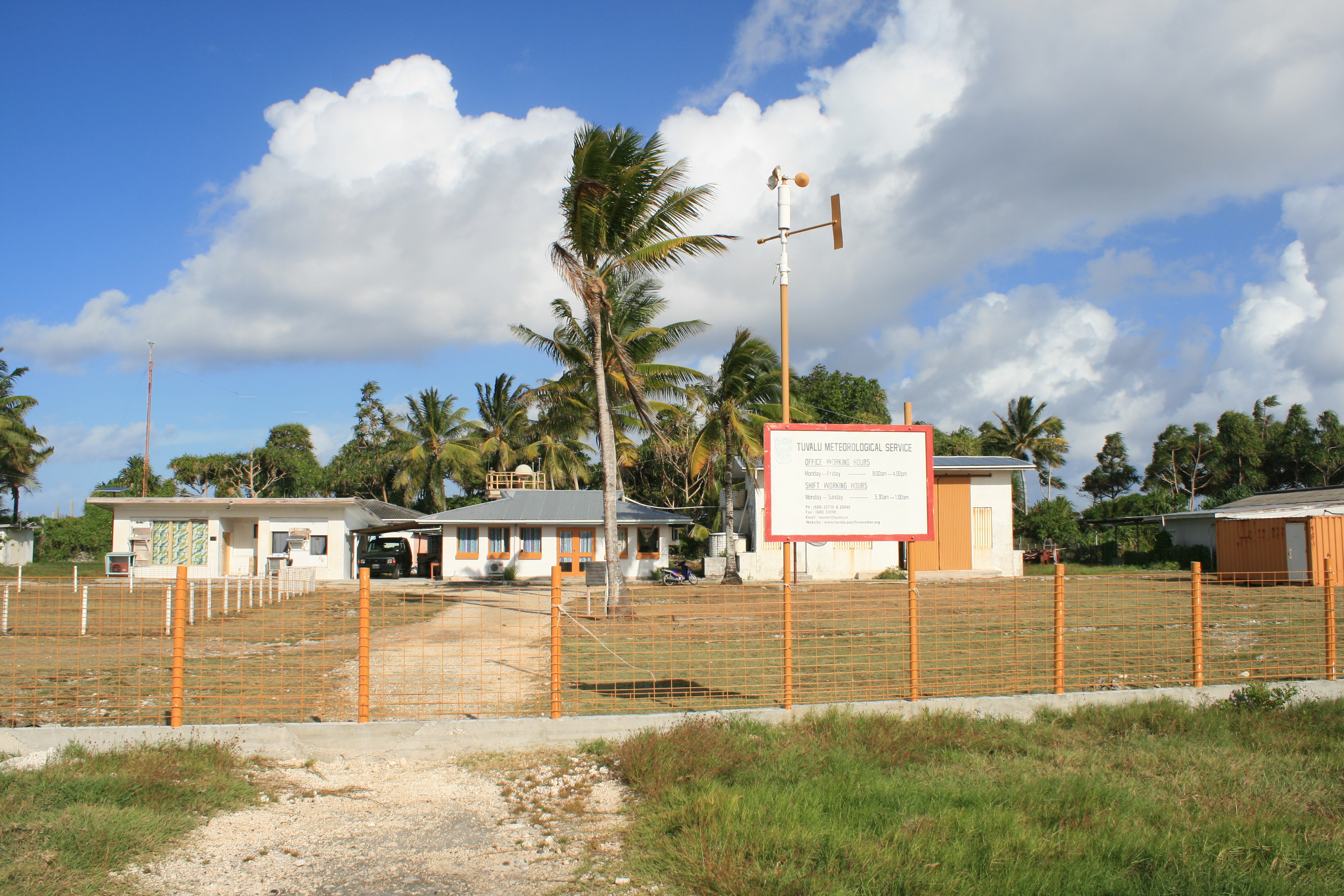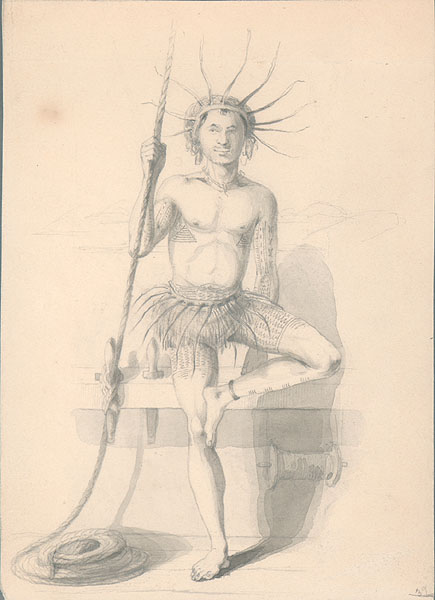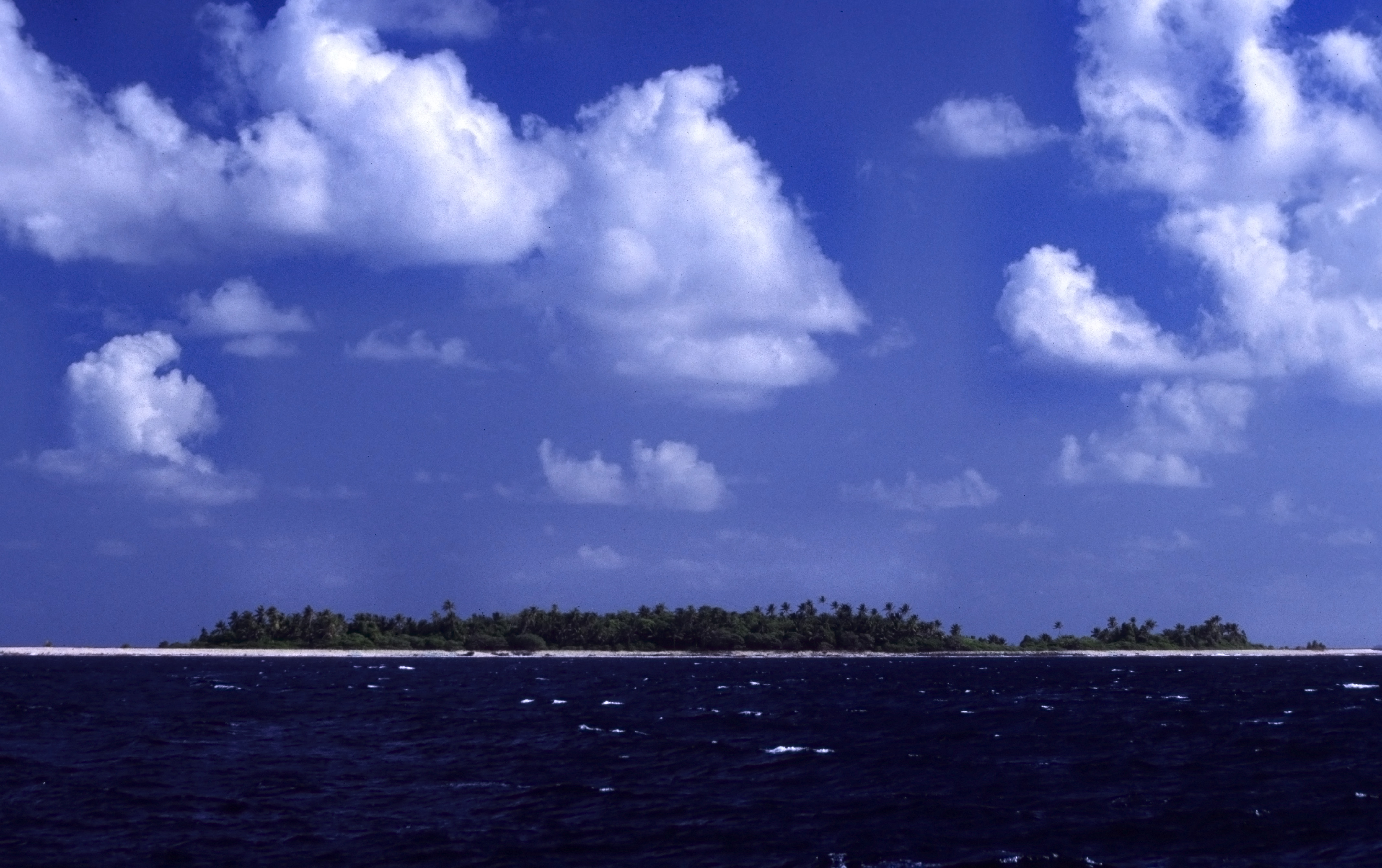|
Tuvaluan People
This article is about the demographic features of the population of Tuvalu, including the age structure, ethnicity, education level, life expectancy, religious affiliations and other aspects of the population. Summary of the demographics of Tuvalu The population of Tuvalu is predominately of Polynesian ethnicity with approximately 5.6% of the population being Micronesian. Tuvaluans are ethnically related to the people of Samoa and Tonga. There is evidence for a dual genetic origin of Pacific Islanders in Asia and Melanesia, which results from an analysis of Y chromosome (NRY) and mitochondrial DNA (mtDNA) markers. There is also evidence of Fiji playing a pivotal role in west-to-east expansion within Polynesia. The vast majority of Tuvaluans belong to the Church of Tuvalu, a Protestant denomination. Their ancestors were converted by Christian missionaries in the 19th century. Infant mortality in Tuvalu was 25 deaths per 1,000 live births in 2012, with an under-five mortality ... [...More Info...] [...Related Items...] OR: [Wikipedia] [Google] [Baidu] |
Church Of Tuvalu
The Congregational Christian Church of Tuvalu ( Tuvaluan: ''Te Ekalesia Kelisiano Tuvalu'', EKT), commonly the Church of Tuvalu, is a Christian Church which is the state church of Tuvalu, although this status merely entitles it to "the privilege of performing special services on major national events". Its adherents comprise about 97% of the ~11,000 inhabitants of the archipelago, and theologically, it is part of the Calvinist tradition. The Constitution of Tuvalu guarantees freedom of religion, including the freedom to practice, the freedom to change religion, the right not to receive religious instruction at school or to attend religious ceremonies at school, and the right not to "take an oath or make an affirmation that is contrary to ne'sreligion or beliefs". History Christianity first came to Tuvalu in 1861 when Elekana, a deacon of a Congregational church in Manihiki, Cook Islands became caught in a storm and drifted for eight weeks before landing at Nukulaelae.Laumua Kofe ... [...More Info...] [...Related Items...] OR: [Wikipedia] [Google] [Baidu] |
Vaitupu
Vaitupu is the largest atoll of the nation of Tuvalu. It is located at 7.48 degrees south and 178.83 degrees east. There are 1,061 people (2017 Census) living on with the main village being Asau. Geography The island, which covers approximately , includes swamps, mangroves, a fringing coral reef, and a large lagoon. Vaitupu atoll consists of at least nine isles: * Luasamotu * Mosana (group of 2) * Motutanifa * Temotu * Te Motu Olepa * Tofia * Vaitupu proper * and at least one other islet The biggest island is Vaitupu proper, followed by Tofia. In the 2012 census, the population of the villages of Vaitupu were: * Apalolo - Saniuta: 263 * Tumaseu: 248 * Potufale: 230 * Asau: 198 In the same census, 502 people were recorded as being at Motufoua Secondary School. On 30 January and 1 February 1990, Cyclone Ofa had a major impact on Vaitupu, with around 85 percent of residential homes, trees and food crops being destroyed. In the 2011 Tuvalu drought, Vaitupu experienced th ... [...More Info...] [...Related Items...] OR: [Wikipedia] [Google] [Baidu] |
Funafuti
Funafuti is the capital of the island nation of Tuvalu. It has a population of 6,320 people (2017 census), and so it has more people than the rest of Tuvalu combined, with approximately 60% of the population. It consists of a narrow sweep of land between wide, encircling a large lagoon (''Te Namo'') long and wide. The average depth of the Funafuti lagoon is about 20 fathoms (36.5 metres or 120 feet). With a surface area of , it is by far the largest lagoon in Tuvalu. The land area of the 33 islets around the atoll of Funafuti totals ; taken together, they constitute less than one percent of the total area of the atoll. Cargo ships can enter Funafuti's lagoon and dock at the port facilities on Fongafale. The capital of Tuvalu is sometimes said to be Fongafale or Vaiaku, but, officially, the entire atoll of Funafuti is its capital, since it has a single government that is responsible for the whole atoll. Fongafale The largest island is Fongafale. The island houses four villag ... [...More Info...] [...Related Items...] OR: [Wikipedia] [Google] [Baidu] |
Niutao
Niutao is a reef island in the northern part of Tuvalu. It is one of the nine districts (islands) of Tuvalu. It is also one of the three districts that consist of only one island - not counting the three islets inside the closed lagoon. Niutao has a population of 582 (2017 census). Geography There are two lakes (ponds or lagoons), which are brackish to saline. The larger has three islands and a dam. There are three wells from which fresher water sits in a "lens" above the salt water that leaches in through the coral. Older maps show the only village as Tuapa (with the neighbourhood of Angafoulua). The main village is Kulia; another village is Teava. There is a maneapa (community hall), Uepele Primary School, a church named ''Tineifale'' of the Church of Tuvalu, a post office, and three wells. A gravel road rings the island to connect the graveyard, half mile (800 m) counter clockwise from the village, and clockwise a quarter of a mile (400 m) to the hospital. The island is somew ... [...More Info...] [...Related Items...] OR: [Wikipedia] [Google] [Baidu] |
Nukufetau
Nukufetau is an atoll that is part of the nation of Tuvalu. The atoll was claimed by the US under the Guano Islands Act some time in the 19th century and was ceded in a treaty of friendship concluded in 1979 and coming into force in 1983. It has a population of 597 who live on Savave islet (2017 Census). In 1951 the school that was located on Motumua islet was transferred to Savave and became the government primary school for Nukufetau. It was named the Tutasi Memorial School in honour of its predecessor. Geography Nukufetau is an atoll with passages through the reef that allow large ships to enter and anchor in the lagoon. Nukufetau consists of at least 33 islets: * Faiava Lasi * Fale * Funaota * Kongo Loto Lafanga * Lafanga * Matanukulaelae * Motufetau * Motulalo * Motuloa (north of Nukufetau) * Motuloa (south of Nukufetau) * Motumua * Niualuka * Niuatui * Oua * Sakalua * Savave * Teafatule * Teafuaniua * Teafuanonu * Teafuone * Temotuloto * and at least 12 other islan ... [...More Info...] [...Related Items...] OR: [Wikipedia] [Google] [Baidu] |
Nanumaga
Nanumanga or Nanumaga is a reef island and a district of the Oceanian island nation of Tuvalu. It has a surface area of about 3 km² with a population of 491 (2017 Census). History On 9 May 1824 a French government expedition under Captain Louis Isidore Duperrey of the ship ''La Coquille'' sighted Nanumaga. The US Exploring Expedition visited in 1841. Louis Becke, who later became a writer, became the resident trader for the Liverpool firm of John S. de Wolf and Co. on Nanumaga from about April 1880 until the trading-station was destroyed later that year in a cyclone. Becke later wrote ''The Rangers of the Tia Kau'' that describes a shark attack at the Tia Kau reef between Nanumea and Nanumaga. The population of Nanumaga from 1860–1900 is estimated to be between 300 to 335 people. Nanumaga Post Office opened around 1925. In 1986 it became a centre of debate when Pacific archaeologists discovered the submerged Caves of Nanumanga, and found what they argued was the rema ... [...More Info...] [...Related Items...] OR: [Wikipedia] [Google] [Baidu] |
Nanumea
Nanumea is the northwesternmost atoll in the Polynesian nation of Tuvalu, a group of nine coral atolls and islands spread over about of the Pacific Ocean just south of the equator and west of the International Date Line. Nanumea is with a population of 512 people (2017 census). Geography Located along one edge of the so-called Polynesian triangle, Nanumea lies just south of the Gilbert Islands, which are Micronesian in language and culture. Nanumea is a classic atoll, a series of low islets sitting on a coral reef shelf surrounding a lagoon. About long by wide in overall size, the dry land area is about . The two largest islets Nanumea and Lakena, which comprise 90% of the dry land area of the atoll. Since the early 1990s, the use of nets and spearing has been prohibited in all parts of the lagoon and the Nanumea Conservation Area was established in 2006. The Nanumea Conservation Area covers about of the central lagoon and consists of about 10% of the reef area of the atol ... [...More Info...] [...Related Items...] OR: [Wikipedia] [Google] [Baidu] |
Australia
Australia, officially the Commonwealth of Australia, is a Sovereign state, sovereign country comprising the mainland of the Australia (continent), Australian continent, the island of Tasmania, and numerous List of islands of Australia, smaller islands. With an area of , Australia is the largest country by area in Oceania and the world's List of countries and dependencies by area, sixth-largest country. Australia is the oldest, flattest, and driest inhabited continent, with the least fertile soils. It is a Megadiverse countries, megadiverse country, and its size gives it a wide variety of landscapes and climates, with Deserts of Australia, deserts in the centre, tropical Forests of Australia, rainforests in the north-east, and List of mountains in Australia, mountain ranges in the south-east. The ancestors of Aboriginal Australians began arriving from south east Asia approximately Early human migrations#Nearby Oceania, 65,000 years ago, during the Last Glacial Period, last i ... [...More Info...] [...Related Items...] OR: [Wikipedia] [Google] [Baidu] |
New Zealand
New Zealand ( mi, Aotearoa ) is an island country in the southwestern Pacific Ocean. It consists of two main landmasses—the North Island () and the South Island ()—and over 700 smaller islands. It is the sixth-largest island country by area, covering . New Zealand is about east of Australia across the Tasman Sea and south of the islands of New Caledonia, Fiji, and Tonga. The country's varied topography and sharp mountain peaks, including the Southern Alps, owe much to tectonic uplift and volcanic eruptions. New Zealand's capital city is Wellington, and its most populous city is Auckland. The islands of New Zealand were the last large habitable land to be settled by humans. Between about 1280 and 1350, Polynesians began to settle in the islands and then developed a distinctive Māori culture. In 1642, the Dutch explorer Abel Tasman became the first European to sight and record New Zealand. In 1840, representatives of the United Kingdom and Māori chiefs ... [...More Info...] [...Related Items...] OR: [Wikipedia] [Google] [Baidu] |
Global Warming In Tuvalu
Climate change is particularly threatening for the long-term habitability of the island state of Tuvalu. This is because the average height of the islands is less than above sea level, with the highest point of Niulakita being about above sea level. Between 1971 and 2014, during a period of global warming, Tuvalu islands have increased in size, according to aerial photography and satellite imagery. Over four decades, there was a net increase in land area in Tuvalu of 73.5 ha (2.9%), although the changes were not uniform, with 74% of land increasing in size and 27% of land decreasing in size. The sea level at the Funafuti tide gauge has risen at 3.9 mm per year, which is approximately twice the global average.Supplementary note 2 in Tuvalu could be one of the first nations to be significantly impacted by rising sea levels due to global climate change. Not only could parts of the island be flooded but the rising saltwater table could also destroy deep rooted food crops suc ... [...More Info...] [...Related Items...] OR: [Wikipedia] [Google] [Baidu] |
Women In Tuvalu
Women in Tuvalu continue to maintain a traditional Polynesian culture within a predominantly Christian society. Tuvaluan cultural identity is sustained through an individual's connection to their home island. In the traditional community system in Tuvalu, each family has its own task, or ''salanga'', to perform for the community. The skills of a family are passed on from parents to children. The women of Tuvalu participate in the traditional music of Tuvalu and in the creation of the art of Tuvalu including using cowrie and other shells in traditional handicrafts. There are opportunities of further education and paid employment with non-government organisations (NGOs) and government enterprises, education and health agencies being the primary opportunities for Tuvaluan women. The number of women holding positions of Assistant Secretaries in government departments has increased from 20% in 2012 to nearly 50% in 2014. Also at the nine Island Kaupule (Local Councils) the representa ... [...More Info...] [...Related Items...] OR: [Wikipedia] [Google] [Baidu] |

%2C_Congregational_Christian_Church_of_Tuvalu.jpg)




.jpg)